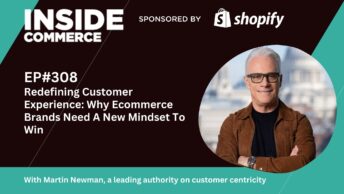An exploration of the impact of improving page speed for ecommerce websites and practical considerations around ensuring your don’t compromise your customer experience just to make the site faster.
Watch the video
Listen on your favourite player
This podcast is inspired by an article from our guest Liam Quinn, Technical Director at Vervaunt, which featured advice from notable luminaries from Yottaa, Render Better and previous podcast guest and respected consultant Erwin Hoffman on optimising for page speed.
We all know that the less you put on a webpage, the faster it will be. But we’re not just trying to make pages fast, for brands the customer and brand experience are equally, often more, important. And measured speed is different to perceived speed.
There is a lot of data around the impact of speed improvements, with many big business case studies. For example a Deloitte report stated that Tui saw a 31% decrease in bounce rates and a 78% reduction in load times through better tech optimisation, and eBay found that a 0.1 second improvement in load time resulted in a 0.5% increase in Add to Cart count (by reducing the pay load, critical path optimisation for above the fold content & prefetching assets).
In this episode we discuss sensible ways to improve page performance, exploring the tools to use and how to use them.
Key discussion points
- What commercial impact does good performance have, why do ecom teams still need to take this seriously and is this becoming less important?
- Finding the right balance: removing scripts can reduce the overall UX, removing content or features – how do you approach this with customers to find the sweet spot of speed x CX?
- Several SEO studies have shown only a small correlation between Rank and page speed. A study by Google and Deloitte stated for every 0.1 seconds that your page speed improves can increase your conversion rates by 8%, I’ve never seen that = what impact on SEO and conversion have you/your client seen with better performance?
- Let’s tackle the elephant in the room: headless is often talked about as guaranteeing faster websites, which IME isn’t correct – what role can headless play in boosting performance?
- Where do ecom sites typically go wrong: what’s bloating pages, what’s slowing down users?
- How do you audit to find out where the problems are, what tools are essential?
- Let’s talk about fonts….what are the dos and don’ts e.g. preloading
- Fonts: when these aren’t pre-installed, downloaded via CSS. Use a CDN source like Google. Web fonts can impact LCP is file size isn’t optimised and CLS via flashing (FOIT flash of invisible text – when system font replaced by your custom font)
- Can preload fonts and set to optional so if not loaded in time, stick with default system fonts (fun explaining that to premium brands!)
- How much value does prefetch and prerender add?
- Which metrics do your clients focus on and why? Do enough people measure this properly and take action?
Want to suggest a topic or guest for a future episode? Contact us via the website or on LinkedIn.





